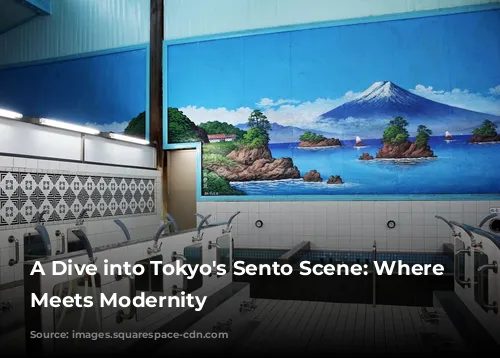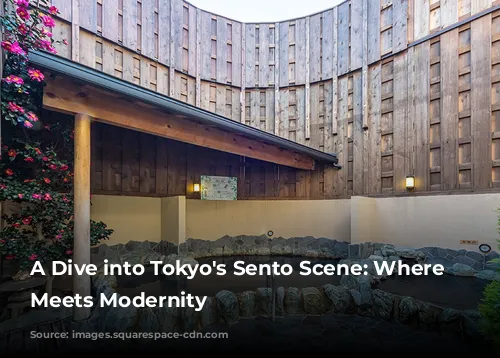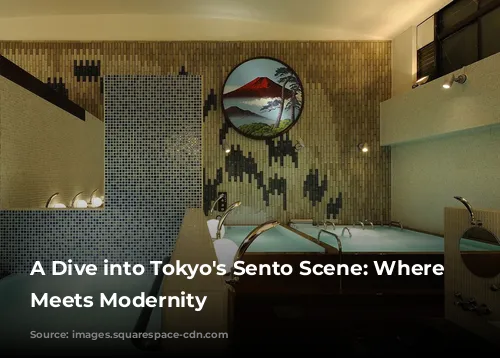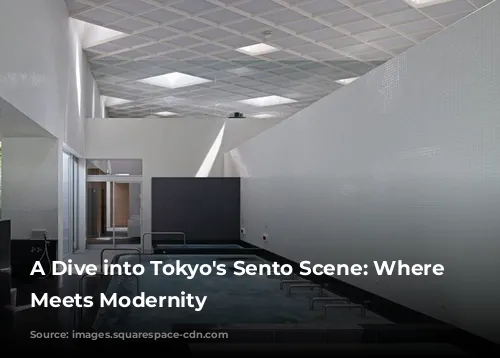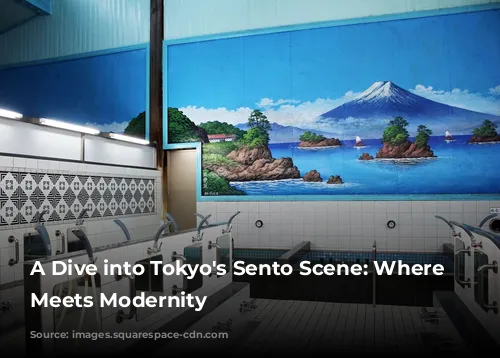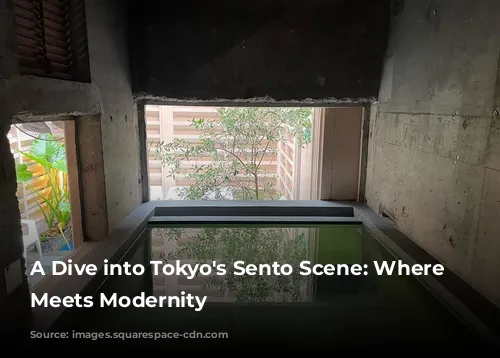Sento, Japan’s traditional public bathhouses, have been a vital part of everyday life for centuries. Imagine a place where you can pay a small fee and enjoy a relaxing soak in various tubs. From its debut in Tokyo in 1591, sento flourished across the country, reaching a peak of over 18,000 in 1968. However, with the rise of private bathrooms in modern homes, the demand for sento has waned, forcing many to close their doors. This trend has been exacerbated by Japan’s shrinking population. Don’t confuse these heated-water bathhouses with onsen, which boast naturally heated volcanic springs. To stay relevant, sento are striving to attract a new generation of bathers by offering modern amenities and embracing artistic designs. Here’s a glimpse into 10 exceptional sento in Tokyo that exemplify the best of this evolving tradition.

A Symphony of Styles: From Traditional Elegance to Modern Design
While some sento embrace cutting-edge design, Fukuno-yu channels the elegance of a traditional Japanese inn, or ryokan. Its stunning wooden decor and graceful landscape paintings create a soothing ambience. Each week, the men’s and women’s baths swap places, offering a completely different experience each time. Daikokuten-no-yu, with its captivating mosaic tile paintings of golden pine trees, provides a unique setting for enjoying the soothing benefits of an artificial radon hot spring and Jacuzzi. In contrast, Benzaiten-no-yu offers a bright and airy atmosphere with a red-brick and white color scheme, complemented by a breathtaking artistic rendition of Mount Fuji. This sento features a medicinal bath and a smaller tub for those seeking solitude. For the active bather, Benzaiten-no-yu doubles as a running station, allowing customers to leave their belongings and indulge in a relaxing soak after a jog.
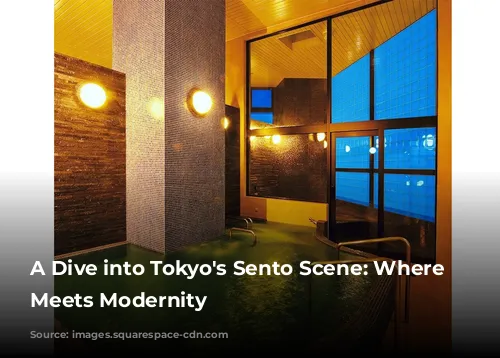
Reimagined Spaces: Where Tradition Meets Innovation
Kogane-yu, a sento that embodies the spirit of modern innovation, has undergone a significant transformation. The present-day building, dating back to 1985, received a much-needed makeover in early 2020. Thanks to a crowdfunding initiative and creative vision, it reopened later that year with a fresh look. Beyond its four baths—hot, herbal, carbonated, and cold—Kogane-yu offers a stylish sauna with aromatic hiba (slow-growing cypress) wood benches. The amenities don’t stop there! A craft beer bar with DJ decks at reception, a cafe serving Kogane-yu’s original blend drip coffee, and a sleek capsule-style hotel for overnight stays add to the experience. The popularity of this sento has led to a unique feature in the world of sento: customers can now book a timeslot online!
Daikoku-yu, Kogane-yu’s sister establishment, has become a social hub just south of Tokyo Skytree. Its large rotenburo (open-air bath), which men and women can enjoy on alternating days, is a major attraction. Other highlights include a carbonated bath, a captivating wall mural painted by award-winning manga artist Yoriko Hoshi, and a choice of two saunas—mugwort steam and far infrared. Relax and unwind in the lobby with soft drinks and beers, or soak up the views of Skytree from the open-air wooden deck. Adding to its multifaceted character, Daikoku-yu boasts a gallery space and serves as a running station, allowing customers to leave their belongings and head out for a jog, returning to the soothing embrace of the baths.
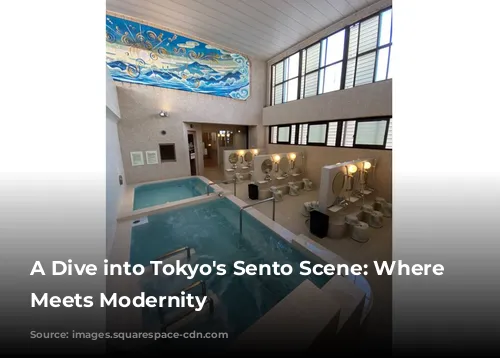
A Legacy of Healing: Designer Sento
Kohmeisen, a family-run sento spanning three generations, underwent extensive renovation by renowned sento architect Kentaro Imai. Reopened as a designer sento in 2014, this bathhouse, located in the heart of Nakameguro, is a testament to the healing power of water. Its entrance, marked by a glowing orange sign—a color symbolizing the warm water’s ability to rejuvenate mind and body—sets the tone for a truly welcoming experience. The interior lives up to its promise, offering a highly carbonated bath said to alleviate pain, a radium bath for easing pain and improving skin conditions, a cold-water bath, and an open-air bath that alternates between genders every Friday. A soothing blue and white Mount Fuji mural, designed by graffiti artist Gravity Free, adorns the wall of the main bathing room.
Tenjin-yu, founded in 1928, underwent a transformation in 2011 under the guidance of designer Kentaro Imai. The concept of “slow” permeates this sento, encouraging guests to embrace relaxation at their own pace. Jazz music fills the lobby and bathing hall, where a selection of tubs awaits—massage, cold water, and nano-bubble for deep cleansing. The large mosaic wall and Mount Fuji mural painted by Morio Nakajima, one of only three remaining specialized sento mural painters in Japan, are particularly striking.
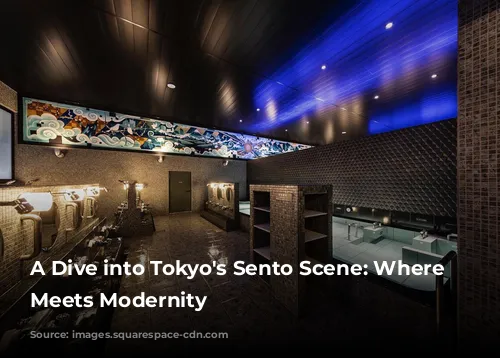
Where Modernity Meets Tradition
Hisamatsu-yu, a proud recipient of the Good Design Award 2015 in the public architecture and facilities category, is widely regarded as one of the best designer sento around. This sleek, modern indoor bath features an innovative light projection show, the first of its kind in a bathhouse. White geometric shapes dance and transform the wall by the main bath, creating a mesmerizing visual spectacle. Other amenities include a carbonated bath known to lower blood pressure and improve circulation, a bath that changes with the seasons, and, unusually for Tokyo, a natural hot spring open-air bath. For ultimate relaxation, visitors can also indulge in massages and reflexology treatments.
Kairyou-yu, established in 1916, has undergone modernization to attract a younger crowd and capitalize on its prime location between the vibrant commercial hubs of Shibuya and Ebisu. This sento, another project by Kentaro Imai, draws inspiration from the iconic “Shibuya Crossing,” aiming to foster community building and cultural exchange. Hot and cold tubs, a carbonated bath, and a popular sauna (often requiring a wait) add to the experience. Kairyou-yu also features a rental space for exhibitions and workshops, and a small shop offering trendy branded clothing and merchandise, allowing visitors to take a piece of the bathhouse home.
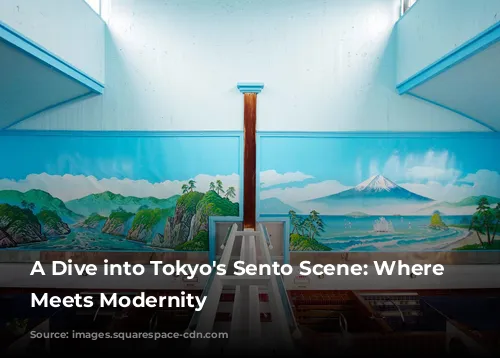
Reviving the Past, Embracing the Future
Inari-yu, established in 1914 and rebuilt in 1930, is often hailed as the poster child for sento revitalization. It was the first project undertaken by Sento & Neighborhood, a non-profit organization founded in 2020 dedicated to the restoration and revival of bathhouses. The group collaborated with the fifth-generation owners to restore a nagaya, a traditional Edo Period (1603-1867) rowhouse, into a vibrant community space, thanks to funding from the World Monuments Fund. The nagaya now operates as a cafe serving craft beer and hosting community events. The sento itself retains its traditional charm, offering three simple tubs—hot, medium, and low temperatures—complete with cypress water buckets below a classic Mount Fuji wall painting.
